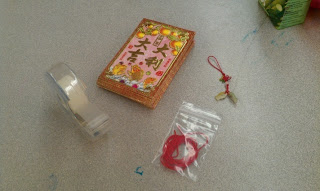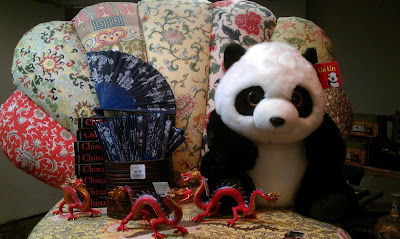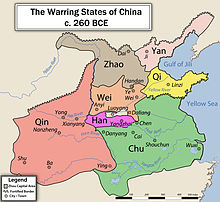Do you like this "flower ball" 花球 (Cantonese: faa1 kau4, Mandarin: hua1 qiu2)? Do you want to make one?
This 花球 is made out of "red
envelopes" 紅包 (Cantonese: hung4 baau1,
Mandarin: hong2 bao1)
Thanks to Helen Man and Tina Lee, instructors at ALESN, I was able to learn how to make such a beautiful flower ball decoration out of Chinese red envelopes.
I have attached a link here in case you want to download the FREE PDF file that I made for this project.
Otherwise, the online instructions are below! Enjoy!
Materials Needed:
30-pack of red envelopes
Scotch tape or a mini-stapler
Red string
Chinese-charms, keychain, or anything decorative for the bottom of your flower ball
Step 1: Making
Creases/Preparation
Facing
the front of the envelope, fold the envelope backwards in half from top to
bottom
Step 2: Making
Creases/Preparation
Open
the envelope again to the original position and fold the envelope backwards
with the left side of the envelope meeting the right side of the envelope.
Step 3: Making
Creases/Preparation
Open the envelope
again to the original position and this time fold the middle-crease at the edge
with the middle crease-at the bottom. Folding the creases will create an
imperfect triangle.
If you
don’t want your flower ball to have any gaps, fold as close as possible to the
creases. You can also use a ruler as a guide to fold the perfect crease.
Step 4: Making Creases/Preparation
Repeat Step 3 with
the other corners of the envelope.
Though,
it is not necessary to press hard on the crease, I find that doing so makes it
easier in crafting my flower ball during the scotch taping/stapling later on.
Repeat Steps 3-4 with
the other 30 envelopes
You
can do it!
At this point, you
can either use scotch tape, a mini-stapler, or any other tool that would allow
you to permanently hold two pieces together in order to begin constructing the
flower ball.
Personally, I enjoy
using scotch tape so that the staples wouldn’t show on the ball.
Take two red envelope
pieces and tape/staple the top upper corner flap together.
If you are taping,
use half of piece of tape on one side of the triangle flap along the crease and
then fold the other half of the tape to the other side to hold the two
envelopes in place. Repeat with the other bottom side of the triangle.
If you are stapling,
staple near the bottom corners of the triangle, one staple per side to hold it
in place.
Step 7: Taping/Stapling the Ball
Repeat Step 6 three more times, each time connecting a new red envelope with the previous envelope.
This is the end
result.
A star. The top of
your ball.
5 pieces used so far.
If you find that you
have a big hole in the middle of your star, try to fix it so that it is closer
together. We will need to put the red string through this hole, but we don’t
want it too large.
If you
find that you messed up, you can always use a pair of scissors/stapler remover
to undo the tape and staples and then redo the problem areas.
Now, it is time to
add five more red envelope pieces to the star. This time, turn your new red envelope
piece sideways and match up the flaps with the star. Again, tape or staple the
flaps together.
This is the end
result.
You
will start to see that your flower ball is becoming 3-D. If you use larger red
envelopes, it could be as big as a hat.
Step 9:
Taping/Stapling the Ball
Put your existing
flower ball aside.
Using
new two red envelopes tape or staple the bottom corner together.
Step 10:
Taping/Stapling the Ball
Repeat step 9 four
more times to make a total of five sets.
Step 11: Adding the
Red String
Now is a good time to
add the red string. First, make sure your string is long enough to go through
the lantern and more after your fold it in half. The length of the string is up
to you, but you will need extra string to make a loop on top and to hook the
charm on the bottom.
Fold your string in
half.
Determine how big of
a loop you want for hanging your lantern and create a knot at the bottom of
your loop. I also recommend making four extra knots on top of the knot to make
the knot way bigger than the hole in the middle of your flower ball. That way,
the knot won’t go through the hole in the ball.
As you
can see, I chose to make a big loop.
Step 12: Adding the
Red String
In the underside of
the ball, place a piece of tape over the knot to secure it in place.
I like
to add extra pieces of scotch tape to the knot for further reinforcement.
Fixing the string after the ball is already constructed would be a hassle.
Step 13:
Taping/Stapling the Ball
Now is the time to
add the new red envelope pieces from step 10.
Line up two side ball
flaps with the bottom of the new red envelope piece. Tape or staple the flaps.
Repeat this step four
more times with the other pieces from step 10 as you go around the ball.
Make
sure the bottom of the red string isn’t accidentally taped or stapled in
between flaps.
Step 14:
Taping/Stapling the Ball
After adding the side
pieces from step 10, you may have noticed that the side flaps are not taped
like the example flap at the bottom of the example picture on the left.
Go
ahead and tape the five side flaps.
Step 15: Taping/Stapling the Ball
Now, we are ready to start on the
bottom half of the flower ball.
Repeats steps 8-6 again backwards,
except this time, it may be easier to just tape each piece to the flower ball
instead as you go along.
Basically, you are attaching a row of
five horizontally first (as seen in the pictures) and then the last row of
five vertically again.
|
Step 15.5: Taping/Stapling the Ball
We are at the final stages of the
flower ball.
Tape or staple the last five corners
vertically.
Remember to make sure the red string is
not accidentally taped or stapled in between flaps.
|
Step 16:
Taping/Stapling the Ball
Carefully tape or
staple the last flap corners, making sure the red string ends up in the middle
(hole).
At this point, you
can tie a piece of charm or decoration to the bottom part of the string in any
way you would like.
Wallah!
We have a flower ball!



























.jpg)




